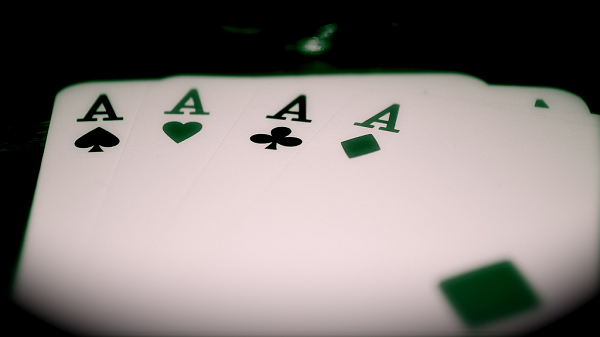A behavior that you’ll find in just about every new no-limit player is betting for hand protection.
Most newcomers are way too worried about “protecting” their hands. For instance, you’ll commonly see a newcomer holding a top pair so worried about a possible flush draw that they ignore potential value in second-tier hands. We’ve all been there, and we learned from it.
But even this unlearning process can become a problem, too – some players have overcorrected for this behavior, and will only bet if they think they can get a call from a lower-value hand or a fold out of a better one. In layman’s terms, some players will avoid protection bets so much that they will only wager as either a value bet or an outright bluff. Many players “learn” over time to bet only as either a value bet or as a bluff.
Situations where Protection Bets are Appropriate
Just because you blew some buy-ins making protection bets as an amateur doesn’t mean these bets are useless. Part of the problem with protection bets as an amateur is that you simply don’t know when, why, or how to make them.
Even in the otherwise protection-phobic game no-limit Texas holdem, betting for protection often makes sense. Don’t worry about whether or not your bet will get calls from lower-value hands, or will force a better hand to fold. Instead, consider whether the turn and river action you see is more likely to favor you or to favor your opponent. If you find your hand is vulnerable, that you aren’t going to see a bluff, or that it would be hard for someone to turn up second-best, then a bet just to take down the pot and avoid giving out a free card makes sense.
Here are two examples to show you how to appropriately bet for protection. These two examples serve to show how even very similar boards may require a different protection strategy:
First Example
The setup: You’re playing with five opponents in a $0.50/$1 no-limit game. It’s your play, at $3.50. You hold Ace of diamonds, King of spades, and you sit in middle position. The flop comes in – Queen of clubs, 8 of spades, 4 of diamonds. Your opponents check. Do you bet?
The first thing you should do is employ some psychology. What are these blinds like? If they play loose, or if they’re weak players or newcomers to the game, you should place a protection bet.
I know, I know – you’ll probably see calls from a few lower-value hands. It doesn’t seem likely that hands worth more than you will fold off this setup. So why are we betting? Because more often than not, you’ll take this pot down. Since there is no obvious benefit to checking, a bet actually makes the most sense here. It’s clear that placing this bet stands to be profitable, if played right. Without any motivation to make any other in-game decision, go ahead and place the bet. Especially in light of the skill level (or lack thereof) in the scenario’s opponents.
Second Example
The setup: You’re playing with five opponents in a $0.50/$1 no-limit game. It’s your play, at $3.50. You hold Ace of Diamonds, King of spades, and you sit in middle position. The big blind calls. The flop comes in: 2 of diamonds, 4 of spades, 4 of diamonds. The big blind checks. The question is – do you bet?
If you’re paying attention, you’ll notice that this hand is quite similar to our first example. You’re up in total range, but you’re in a situation where better hands probably won’t fold, and the lower-value hands around the table won’t call.
I think the smart money is on check rather than bet. Here’s some reasons why:
- Your AK dominates all of the hands that would have folded to a flop bet. If your opponent has a pair, you’ve got a 40% chance of holding the same pair with a better kicker. If your opponent is sitting on a pair of Aces or Kings, or if your hand becomes a second-bet hand, you might lose. There’s also the chance that your opponent could slow-play that big pair and burn you that way.
- You don’t have much room to bluff at the turn. If a Queen or Jack came in, it might scare off an opponent with a middling pair. Since you’ve got that backdoor flush draw, a diamond on the turn would give you an ideal semi-bluff hand, but that’s about it.
- You don’t have any draws to worry about, so you don’t need to concern yourself with handing out a free card and lose the pot. Betting the flop might actually knock you off all your outs if you get check-raised on pairs.
Why check this flop? You don’t really need to protect anything this time around. That means you don’t really need to make a protection bet. You’re ahead, ahead, and you will be able to call you can call at most turns, and you face low odds of a suck out, so you don’t risk much at all by giving away a free card.
Conclusion
Most bets you make in no-limit Texas holdem should be either bluffs or value bets. That said, it’s easy to identify situations where a bet made for protection does make sense. Making a good protection bet is all about understanding what you’re protecting yourself against and why you’re taking that action.
The main thing to remember is that a protection bet makes sense in a bad turn and river situation, one where your opponent can improve his hand, but where you can’t or can’t without getting bluffed. Yes, a protection bet is considered an amateur move, and most of the time it is one. But when you know when, why, and how to do it, it can be a useful part of any no-limit poker strategy.

 MENU
MENU















